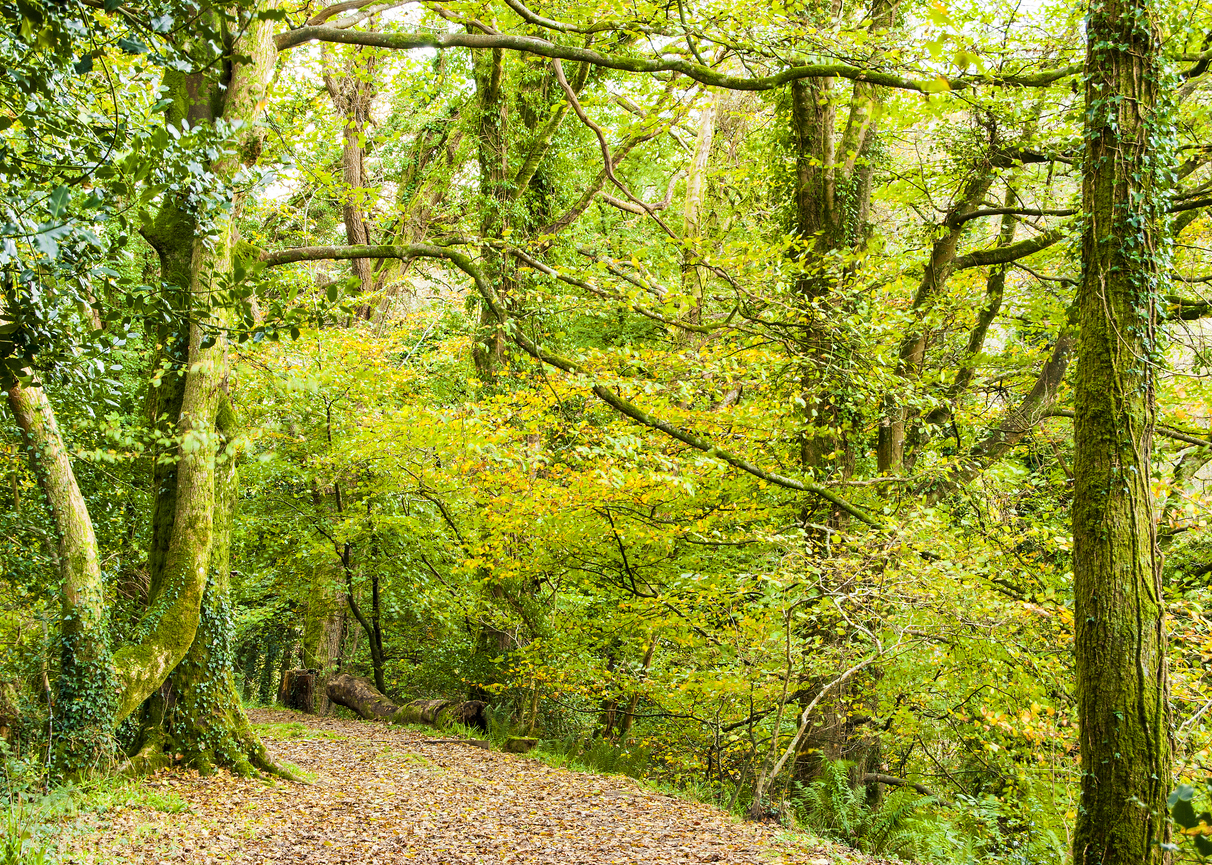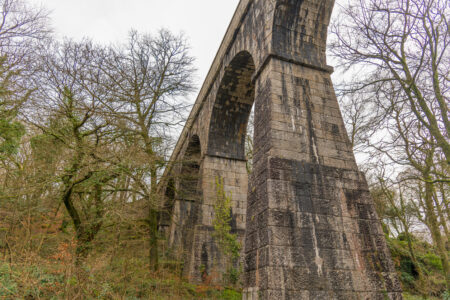Luxulyan valley was once a hive of industrial activity but these days the forces of nature and past human industry combine to create an enchanting woodland escape, full of interest and beauty.
It is hard to imagine that this was once an area famed for its mines and quarries with as many as ten trains a day passing through, laden with China Clay from the nearby pits. Stone from the quarries was shipped all over the world and used in projects such as the old Plymouth breakwater and lighthouse as well as Wellington’s sarcophagus in St Pauls’ Cathedral.
Peaceful tracks and river paths
Today however visitors can wander miles of peaceful tracks that weave through thick woodland around the babbling River Par. The signs of the industrial past are still visible everywhere however but miraculously reclaimed by nature. In spring bluebells proliferate amongst the remains of waterwheels, crib huts and the giant boulders left by the masons. Water still gushes through the trees in the old man-made channels that once fed water-wheels and some of the pathways themselves follow old tramlines.
A particular highlight is crossing the magnificent Treffry Viaduct which spans the valley at a height of some 30m (98 feet), soaring above the treetops with the Newquay branch line track beneath. This grand, granite structure is not only beautiful, it is also a wonder of engineering, completely unique in Cornwall.
Treffry Viaduct
The viaduct, built by Joseph Treffry, was constructed in 1842, with the railway that crossed it working by 1844. Unusually the viaduct had a water channel underneath the railway track feeding the Fowey Consols nearby and this is where the brilliance of its engineering becomes apparent. The viaduct was also a kind of aqueduct.
The level of the deck and of the hillside ledge were precisely calculated with a fall of about 20ft per mile to achieve the desired flow of water. On its way, this water was used to power the Carmears incline by means of a 34ft diameter waterwheel and a winding cable.
The woodlands themselves are alive with flora and fauna, including many wild birds, flowers, mosses and fungi making them great for explorers and nature lovers, young and old!
Cared for by Cornwall Wildlife Trust the beautiful Luxulyan Valley is also part of the Cornwall Mining World Heritage Site. There are maps and information boards in the carparks and around the woodland to help you navigate and understand the history of this fascinating valley. Look out for guided walks and talks covering history and wildlife too, which are held throughout the year.


